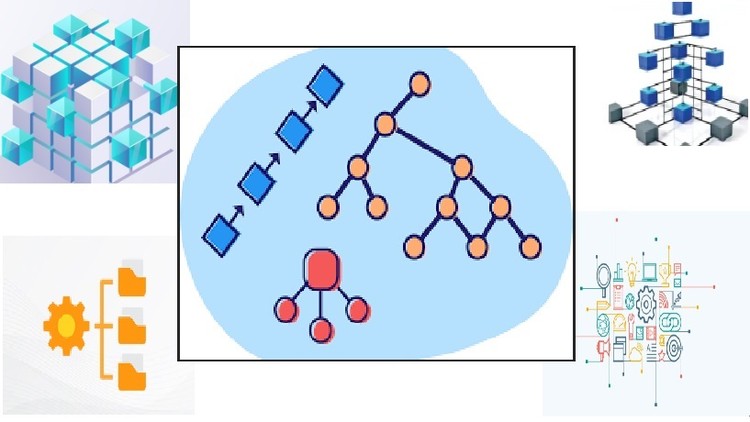
Introduction course
What you will learn
Understand the basic concepts of Abstract datatype
Apply the concept of Linked list with singly, doubly and circular Linked list
Formulate the solution for Searching, deletion and Insertion in Linked List
Analyze the concepts of trees and binary trees
Why take this course?
Data structures are the backbone of efficient programming and algorithm development. This course is designed to provide students with a comprehensive understanding of fundamental data structures, focusing on abstract data types (ADTs) and linked lists. Throughout the course, students will explore the conceptual underpinnings, practical applications, and performance implications of these critical structures. By the end of the course, students will have a strong foundation in data organization and manipulation, equipping them with the skills necessary to solve complex computational problems.Students will learn about the concept of ADTs, which are a theoretical framework used to define data structures by specifying their behavior and operations without detailing their implementation. This section will cover key ADTs such as stacks, queues, lists, sets, and dictionaries. The course will emphasize the importance of ADTs in creating reusable, modular code that separates interface from implementation. The course will offer an in-depth exploration of linked lists, one of the most fundamental and versatile data structures in computer science. Students will study various types of linked lists, including singly linked lists, doubly linked lists, and circular linked lists. They will gain practical experience in implementing these structures. Students will analyze the performance trade-offs associated with different data structures, particularly linked lists. This includes understanding the time and space complexity of operations such as insertion, deletion, and traversal. The course will also compare linked lists with other data structures, such as arrays, to highlight their advantages and limitations in specific contexts. The course will include hands-on programming assignments where students will implement various ADTs and linked lists in a programming language C. These assignments will reinforce theoretical knowledge by challenging students to solve problems using the appropriate data structures and to optimize their solutions for performance.